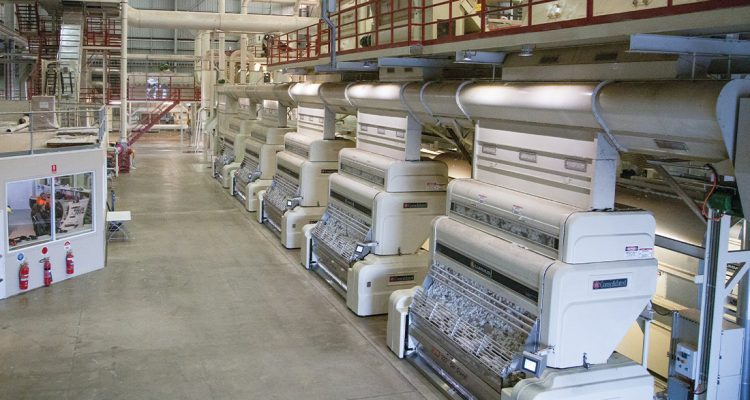Waiting for an intermittent fault to shut down a vital piece of production equipment is not everyone’s idea of an exciting Saturday afternoon – but that was the scenario for two Motion specialist hydraulics technicians as they waited for a tramper to run to fault at the Australian Food and Fibre (AFF) cotton processing plant in Hay, New South Wales.
Cotton processing is a time critical operation. When downtime-free productivity is vital and a fault stops production, getting specialists to site and having the right people to quickly analyse the problem, devise a solution and get the plant back online is paramount.
During the six-month processing window, the Australian Food and Fibre cotton processing plant at Hay in southern NSW runs 24/7 to maximise productivity. Output is targeted at 900 bales of processed cotton per day. This is an achievable target but downtime is not an option.
The tramper is essentially the last stop on the production line. Used to compress the lint (cleaned) cotton into the baling chamber of a press box – to reduce the volume of the press box required – it is powered with a servo-controlled vertically oriented hydraulic cylinder.
In operation, lint cotton is pushed into the baling chamber by a second hydraulic cylinder in the tramper circuit. The tramper descends, compresses the lint cotton and returns to its rest position ready to compress the next bundle of lint cotton pushed into the chamber. On average, around seven compression charges are required to generate a 227kg bale ready for despatch – the acknowledged industry standard in Australia.
But when the tamper is impacted by an intermittent fault and does not descend as planned, productivity stops.
Each time the tramper did not work, the production crew would turn off the power then turn it back on to reset the tramper. This step worked – sometimes for two hours, sometimes longer – but eventually the fault would reoccur. Given the power off / power on process was working, the decision was made to start the investigation at the servo valve controlling the cylinders on the tramper circuit.
To find the cause of the fault the Motion technicians used a combination of PLC diagnostics including an RMC Delta Controller to plot the operation and performance of the valve and also an HMG Data Logger to track the hydraulics and valve commands.
The diagnostics showed that the system had the necessary hydraulic pressure but at the wrong time. The more telling result was that the servo valve that controls the tramper cylinder had a stuck spool in it which would occasionally get jammed over, which meant hydraulic pressure to the cylinder when it was not required and vice versa.
With the problem identified, a solution was needed. The plant had an old servo valve available which was re-worked by the Motion technicians and installed in the circuit. With the old valve installed, operating speed was ramped up to the target 90 bales an hour which will allow the plant to finish their processing schedule on time. The faulty valve was refurbished by Motion and returned to the customer.
As it turned out the problem was inside the valve and the problem would not have been identified without the Delta Controller and HMG Data Logger. To access the valve the techs fitted a signal splitter to the loom of the valve so the diagnostic technology could analyse the signal in and out.
The combination of the right people and the right technology delivered the right result. Downtime was kept to a minimum and the plant quickly regained its target productivity schedule – at minimum time lost.

